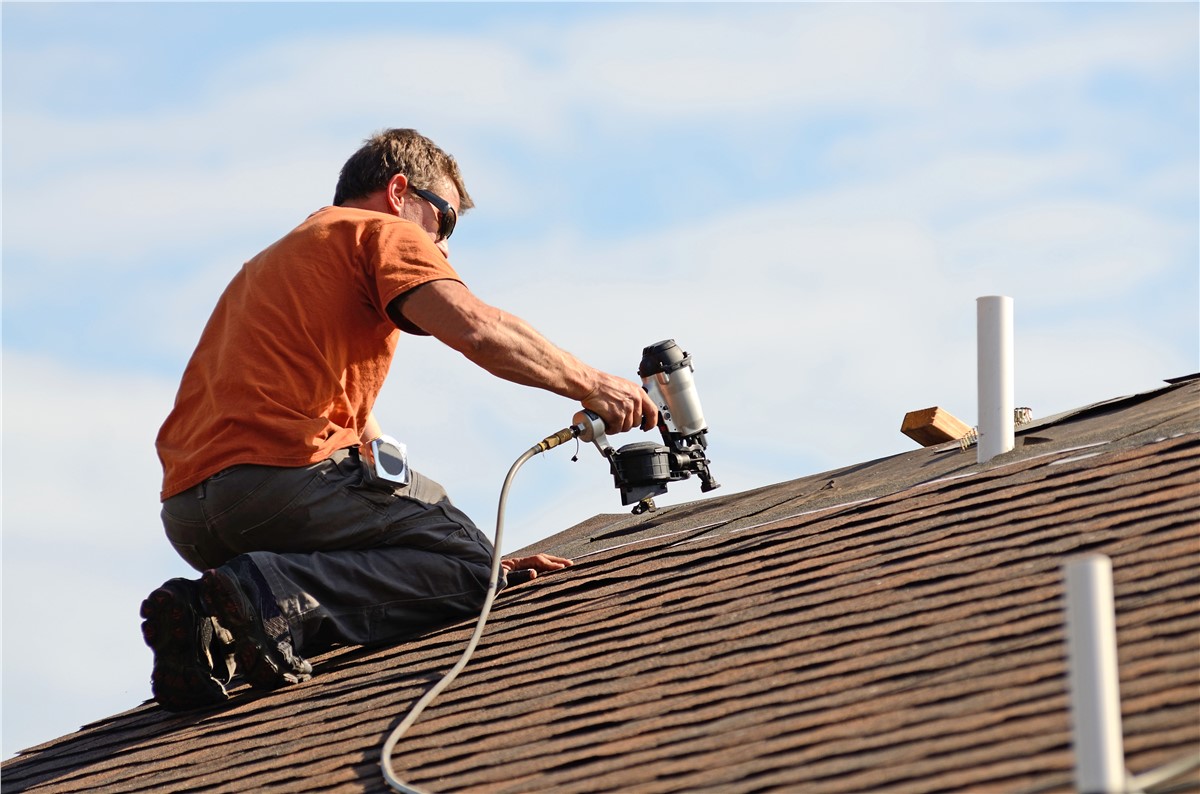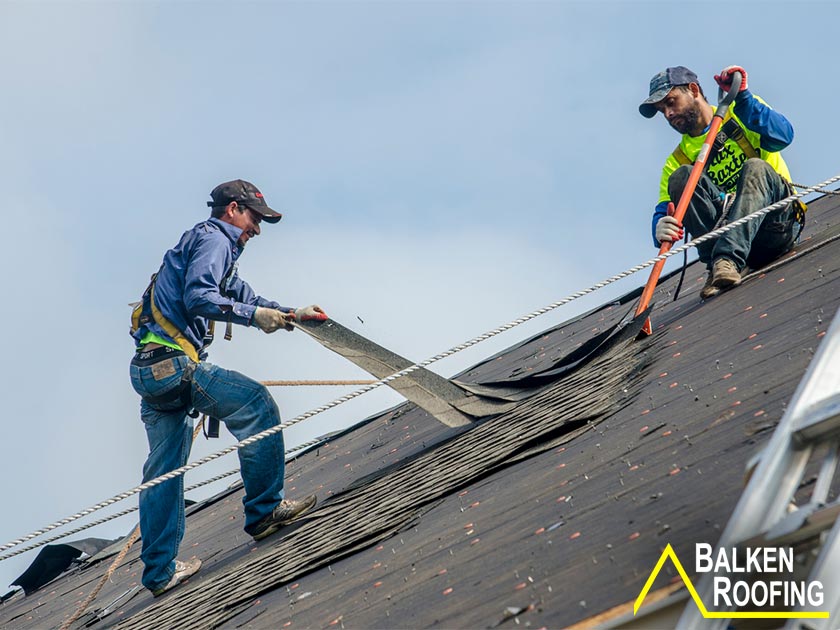Recognizing the Various Types of Roofing Systems: A Comprehensive Guide for Homeowners
With a variety of choices-- varying from the standard gable to the modern flat-- each type offers special benefits and obstacles that need to line up with the homeowner's environmental considerations and certain needs. As we discover the details of different roof covering kinds, it comes to be evident that one dimension does not fit all; the best option might stun you.
Gable Roofs
Saddleback roofs, defined by their triangular shape, are amongst the most prominent roof covering designs because of their simpleness and efficiency in shedding water and snow. This layout includes two sloping sides that fulfill at a ridge, enabling effective water drainage and lessening the threat of water buildup. The steep pitch typically linked with saddleback roofs boosts their capability to deal with hefty precipitation, making them appropriate for numerous environments.
In enhancement to their sensible benefits, saddleback roofs use visual convenience. They can be adapted to various building designs, from conventional to modern-day homes. The layout can also fit added functions such as dormer home windows, which improve natural light and ventilation in the attic room area.
Additionally, saddleback roofs give ample space for insulation, adding to power efficiency. House owners can select from a variety of roof materials, consisting of asphalt roof shingles, metal, and floor tiles, further improving personalization options.
Despite their benefits, gable roofings might need additional support in locations vulnerable to high winds or heavy snowfall. In general, the saddleback roof continues to be a popular choice as a result of its mix of performance, longevity, and visual charm.
Flat Roofs
Flat roofings are usually identified for their minimal style and functional applications, particularly in industrial and industrial settings (oahu roofing). These roofings feature a virtually horizontal or straight surface area, which enables easy construction and functional space usage. While they might lack the aesthetic charm of angled roofs, flat roofings use countless benefits, specifically in metropolitan atmospheres where making the most of area is critical
One of the primary advantages of flat roofings is their access. Homeowners can use the roof covering room for different functions, such as rooftop gardens, terraces, or photovoltaic panel installations. Additionally, flat roofings are typically more cost-efficient to set up and preserve compared to their sloped equivalents, as they need fewer products and labor.
Nonetheless, flat roofings do present specific difficulties. Correct drainage is necessary to stop water merging, which can result in leakages and structural damages. Therefore, choosing high-grade waterproofing products and normal evaluations are essential for guaranteeing durability. Usual products utilized for flat roofings include built-up roof (BUR), customized asphalt, and single-ply membrane layers, each offering distinct advantages. Overall, level roofs act as a practical and adaptable option for many house owners and services alike.
Hip Roofings
Hip roofs are identified by their sloped sides that merge on top, creating a ridge. This layout is unique from gable roofings, as all four sides of a hip roofing incline downwards towards the wall surfaces, supplying a much more stable structure. The angle of the slopes can differ, permitting adaptability in building aesthetics and capability.
Among the primary benefits Visit Your URL of hip roofs is their ability to withstand hefty winds and damaging weather condition conditions. The sloped surfaces allow far better water drainage, minimizing the risk of leakages and water damages. Furthermore, hip roofings use boosted attic room, which can be utilized for storage space and even exchanged habitable areas.
However, constructing a hip roofing system can be extra complicated and costly than easier roof kinds, such as gable roofings. The additional material and labor associated with creating the slopes and making certain appropriate architectural integrity can result in higher costs. Despite these disadvantages, many property owners favor hip roofings for their resilience, visual appeal, and capacity for power efficiency.
Mansard Roof Coverings
Mansard roofing systems, usually recognized by their one-of-a-kind four-sided style, attribute two slopes on each side, with the reduced slope being steeper than the top. This building style, originating from France in the 17th century, is not just cosmetically appealing however useful, as it makes best use of the usable area in the top floors of a building. The steep lower incline permits for even more headroom, making it a suitable selection for attics or lofts, which can be transformed into living spaces.
Mansard roofing systems are defined by their convenience, accommodating different architectural styles, from standard to contemporary. They can be created with various products, consisting of asphalt tiles, slate, or steel, providing house owners with a variety of alternatives to suit their spending plans and preferences. In addition, the style permits the combination of dormer home windows, boosting all-natural light and air flow in the upper levels.
Nevertheless, it is crucial to take into consideration the possible downsides. Mansard roofings might call for more maintenance due to the intricacy of their layout, and their steep slopes can be challenging for snow and rainfall drainage. Generally, mansard roofings incorporate elegance with usefulness, making them a preferred option among homeowners seeking distinct building features.
Shed Roof Coverings
As home owners significantly seek simplicity and capability in their architectural layouts, lost roofings have arised as a prominent choice. Identified by a solitary sloping plane, a shed roof covering provides a minimalist visual that complements numerous home styles, from modern to rustic.
Among the main benefits of a shed roofing system is its uncomplicated construction, which usually equates to lower labor and material expenses. This layout enables effective water drainage, minimizing the threat of leaks and water damage. In addition, the upright slope gives ample area for skylights, boosting all-natural light within the interior.
Dropped roofs also provide convenience in regards to use. They can be successfully incorporated right into enhancements, garages, or outdoor structures like pavilions and sheds. Additionally, this roofing design can suit various roof products, consisting of steel, asphalt tiles, or perhaps green roofings, aligning with eco-friendly efforts.
Nonetheless, it is vital to think about regional climate conditions, as heavy snow loads may require modifications to the roofing system's angle or structure. In general, shed roofing systems provide a useful and visually pleasing option for property owners wanting to take full advantage of performance without jeopardizing style.
Conclusion


Gable roof coverings, characterized by their triangular form, are amongst the most popular roof covering styles due to their simplicity and performance in shedding water and snow. oahu roofing. The steep pitch frequently associated with gable roofings boosts their ability to deal with hefty rainfall, making them appropriate for various environments
While they may do not have the aesthetic charm of pitched roof coverings, level roofings supply countless advantages, especially in urban environments where taking full advantage of room is essential.

Comments on “Roofing Companies Oahu: Premier Roofers for All Roofing Projects”